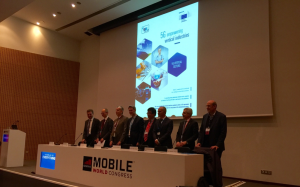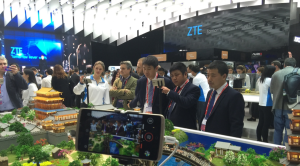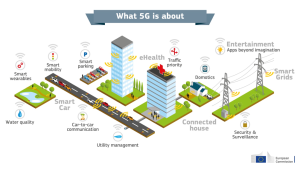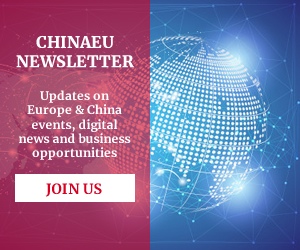China will be key for Europe’s mobile industry of tomorrow
Joint 5G flagship initiatives are needed
Barcelona, 23 February 2016 The Mobile World Congress (MWC) kicked off yesterday for its 30th edition. More than 90,000 industry experts meet this week in the Catalonian capital and discuss the future of the mobile ecosystem at the world’s largest mobile technology trade show.
The most expected guest is Gunther Oettinger, the member of the European Commission in charge of telecommunications policy. His decisions in the coming months will have a durable influence on the mobile industry in Europe and its competitiveness.
One of his priorities is to position Europe in the coming race for the next-generation of wireless network, most commonly known as 5G. The discussion is about more than an industry standard. It is about the wireless communications of tomorrow and about whether European companies will play a key role in its deployment, or be followers of systems developed on other continents. South Korea announced that it will be ready to showcase 5G technology already for the Winter Olympics in 2018; Japan aims to reach over 1 gigabit bandwidth 5G for the Summer Olympics in 2020. China has announced a new ambition plan to be the leader in 5G; it created the International Mobile Telecommunications 2020 (IMT-2020) Promotion Group, and recently announced that 5G will be put into trial operation in 2018. The European Commission has launched the 5G public-private partnership (5G PPP), providing funding for European based operators to make progress on the technology and seeking to deploy full commercial 5G infrastructure by 2020.
Commissioner Oettinger and executives from global top technology companies at the launch of the 5G PPP white paper “5G Empowering Verticals” on Monday, 22 February afternoon
At the MWC, Luigi Gambardella, President of ChinaEU, hailed the determination of Commissioner Oettinger to keep 5G at the top of his agenda. Commissioner Oettinger initiated cooperation with other major ICT countries to avoid the fragmentation of the global mobile internet space in national markets each with their own definitions and spectrum bands. In September 2015 a milestone agreement was signed between the EU and China in Beijing to start mutual coordination of policies.
However, Luigi Gambardella warned that: “in order to make sure that 5G is truly global and is thus dominated by a single global standard, the pace of International cooperation should be intensified in the coming months. The industry is moving forward, in particular in China”.
ChinaEU identified two areas which should now be the EU Commission’s priority:
- Deepen joint research and strive to keep the respective 5G R&D programs fully open and transparent to all potential participants. Following the signature of the joint declaration on strategic cooperation on 5G, China and Europe committed to reciprocity in the respective research programs and expressed support for the deepening of interactions and exchanges between the bilateral industry associations dealing with 5G, namely the EU 5G Infrastructure Association and the IMT-2020 (5G) Promotion Group. Despite the commitments, such programs are not fully transparent and there is huge space for increased participation of Chinese and European telecom operators and vendors.
- Jointly develop 5G flagship initiatives both in Europe and in China, including 5G smart cities, pre 5G demonstrations, trials of self driving public transportation, etc.
A shot of ZTE stand at MWC 2016
In this regard, ChinaEU applauds the announcement by Xiao Ming, President of ZTE Europe, that ZTE is determined to become a key vendor in Europe, because ZTE is one of the key players in the development of 5G. ZTE has already passed the verification tests for its Pre5G technology – Massive MIMO (multiple-input and multiple-output). It has already demonstrated this technology in China and is now seeking to do the same in European continent. ZTE’s commitment in Europe will contribute to China and Europe moving at the same pace towards the launch of the new technology.
Background
5G aims to provide perfect wireless connectivity. Users will be connected anywhere –even in rural and remote areas – at any time, not just among themselves, but also with their objects, and objects will communicate among each other with the same easiness, generating what people name the “Internet of Things”. Based on this broad definition, it is expected that the new technology will enable a whole new range of applications that today are unimaginable. Things like assisted and fully automated driving, remote health care solutions, energy management, smart homes (domotics), smart manufacturing, futuristic gaming experiences – in one word, smart everything – will become part of our daily lives, in the same way as electricity became an essential element in our homes in the past century.




